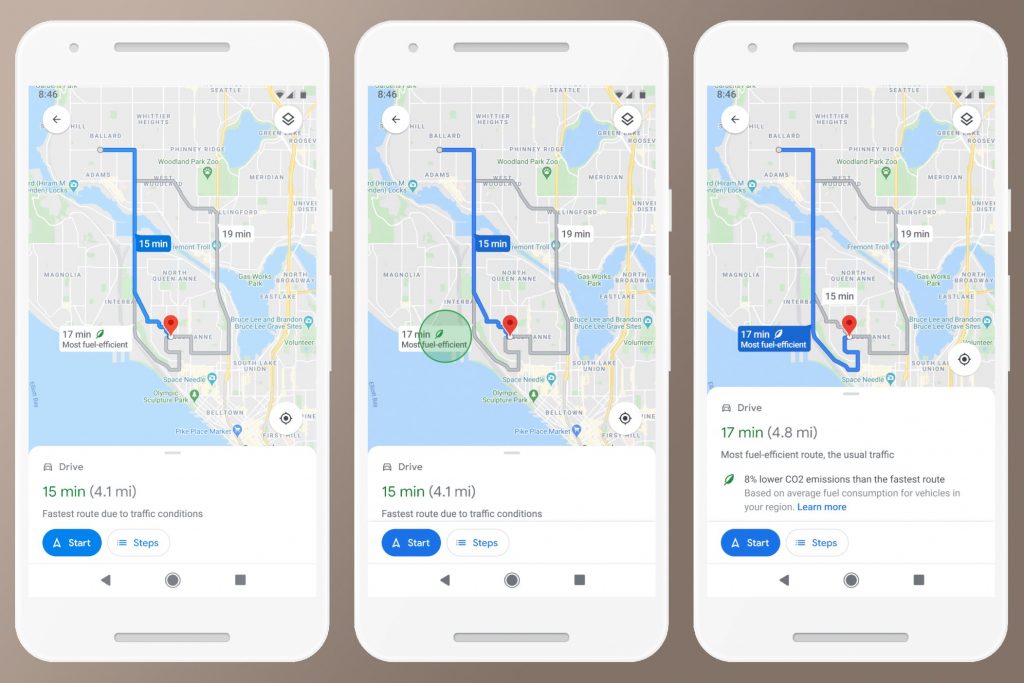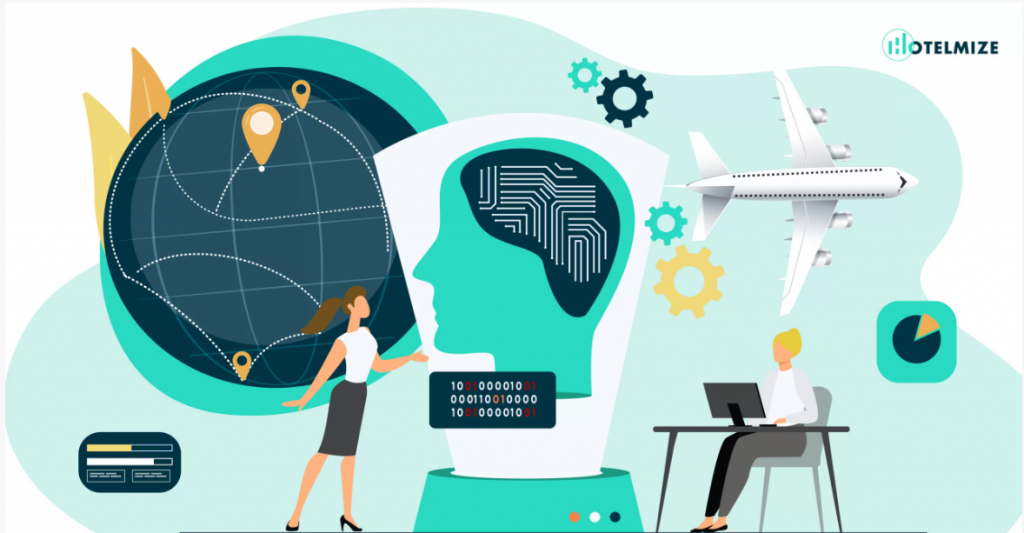
I think most of you have used Google Maps before. Previously, when searching for a location to go to by car the app provides you with 2 different options, either the fastest route or the shortest route. However, last year Google launched a new feature in the US which will be implemented in more than 40 different European countries during the coming month: “The eco-friendly route”. This new feature should provide users with an eco-friendly route which should lead to lower greenhouse gas emissions as well as lower gas usage with only limited or no time-cost trade-offs (BBC, 2021). Google’s CEO Sundar Pichai even promised that this new feature could save about one million tonnes of carbon dioxide a year, which is the same amount that could be saved when there is a reduction of 200.000 cars on the road (Milmo, 2021).
In order to provide users with the most eco-friendly route, different factors are taken into consideration. First of all, the engine in the used car is an important aspect since hybrid and electrical cars are typically more efficient when having to stop and accelerate a lot and diesel engines perform better when driving at higher speeds than petrol and gas engines (Lozano-Aguilera, 2022). Other factors that are taken into consideration are real-time traffic situations, possible hills on the route, the number of times the user needs to break and accelerate, etcetera (Milmo, 2021). Especially in the current situation wherein gas and electricity prices are rising sky high this function could really add value since Google claims that by taking the eco-friendly route, in addition to reducing carbon emissions the route is optimized to lower fuel consumption (Milmo, 2021). I think the choice of whether to drive eight minutes longer and save 25% of your expected fuel costs is one that can be made very quickly.
This is not the first green initiative Google has introduced in its navigation platform. Google has already implemented multiple functionalities related to sustainability such as:
- It’s electric which provides information about charging stations that are close by as well as charging speed and whether the charger is free at the moment
- Swapping four wheels for two which is a function to incentivize users to go by bike instead of by car and provides users with a lot of information about the cycling route
- Navigate public transport with ease which provides users for example with real-time arrival and departure times of public transport and whether a particular route and transport mode will be busy
- Sleep more sustainably which is a Google feature that aids users in finding the most eco-friendly hotel options (Lozano-Aguilera, 2022).
In my opinion, introducing this additional “green” functionality might help Google maps enlarge its user base since Apple maps does not provide this functionality yet. However, I also think that competitors like Apple with their large technological experience will develop a similar function soon in order to keep up with Google. Besides, I think when the majority of car drivers around the world frequently take the eco-friendly route rather than the fastest or shortest route, Google can indeed make a positive sustainable impact with this new feature. What do you think about it?
References
BBC News. (2021). Google Maps to start showing eco-friendly routes. https://www.bbc.com/news/business-56585877
Lozano-Aguilera, R. (2022). More ways to drive sustainably and save money with Google Maps. https://blog.google/around-the-globe/google-europe/eco-friendly-routing-in-europe/
Milmo, D. (2021). Google Maps to show the lowest carbon route for car journeys. https://www.theguardian.com/technology/2021/oct/06/google-maps-to-show-the-lowest-carbon-route-for-car-journeys

